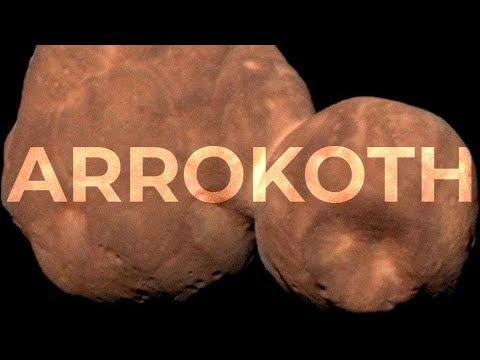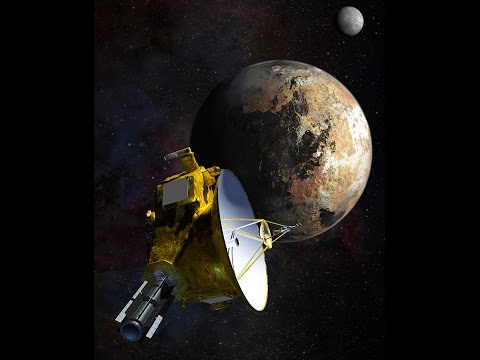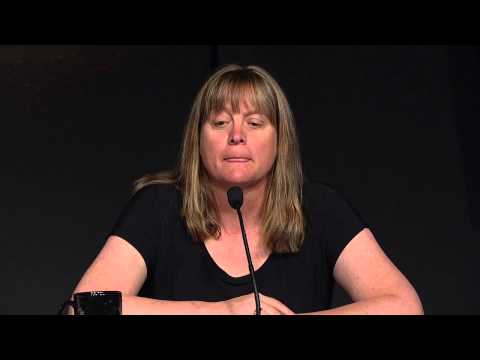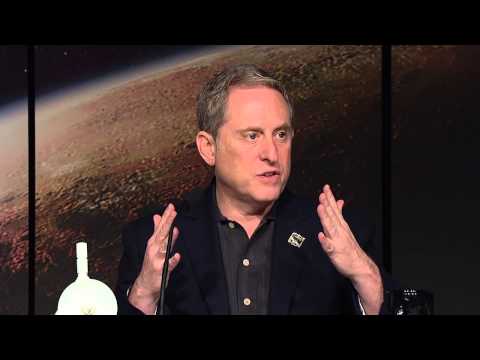NASA Mission Update: New Horizon
Three billion miles away from Earth, near the farthest reaches of our solar system, is the heavenly body with an extreme orbit known for 76 years as Pluto. Discovered by astronomers in 1930, Pluto was considered the ninth planet in our solar system until 2006 — when, after much debate, it was reclassified by the International Astronomical Union as a “dwarf planet,” officially dropping its name — for a number.
Denis Bogan, New Horizons Program Scientist: “Well, it certainly doesnt affect Pluto. Pluto is the same thing it was before it was discovered, before it was given a name, and before the name was changed.”
Nor does Pluto’s reclassification change the importance of NASA’s first mission to study it.
Launch Announcer: “We have ignition and lift off of NASAs New Horizon spacecraft on a decade-long”
Launched in January 2006, the thousand-pound New Horizons spacecraft will travel through space for 9-1/2 years before meeting up with Pluto in the summer of 2015.
Denis Bogan: “The last time Pluto was in this position in its orbit was during the French and Indian War. It takes 248 Earth years to travel around its orbit and come back to the same place again. At the speed of light, sending a radio signal back from the spacecraft, from Pluto to Earth, will take 4-1/2 hours.”
Operating on less power than a pair of common 100-watt light bulbs, New Horizons will map the highest-interest areas of Pluto to a resolution of 50 meters, less than the length of a football field — three billion miles away. Itll then move on to survey Pluto’s neighborhood: the atmosphere, ancient materials and small bodies of the Kuiper Belt, a chaotic region astrophysicists believe can tell us how Earth, the planets, even our sun were made.
Denis Bogan: “We have primitive material chunks of rock and ice, millions of objects of objects out there in the Kuiper Belt and we know very little about it. We didnt discover it until 1992.”
Traveling 3 billion miles to frozen, rocky Pluto and its environs, New Horizon is, in a way, going back in time to the chemical building blocks of the solar system, and life.
To learn more about the New Horizons mission visit www.nasa.gov





Really exciting mission. One of the most interesting missions NASA is undertaking. I can't wait to finally see some up close visuals of Pluto and even more interesting question is whats lurking out there in the Kuiper Belt
NASA should start doing missons such as Voyager or Pioneer, things that are gonna last like 20 years and collect data from pretty much all the planets.
@rickcain2320
I guess that you are talking about plutocracy and the politicians serving it. Yep, the politicians you and I vote for. It's not only the americans who think that everybody can become rich, otherwise nobody in the world would be investing in funds, bonds, stock options, shares, futures and securities. The whole idea is making profit, whereas the only person who really makes profit is the fund manager himself. If there's a minimum salary, there should also be a maximum salary.
I love AstronoME can't wait to see high resolution pics of Pluto the astrological planet of Transformation, I'm sure the knowledge it spawns will transform Many science books for years to come and who knows the what the state of the world will be 2015. So excited!